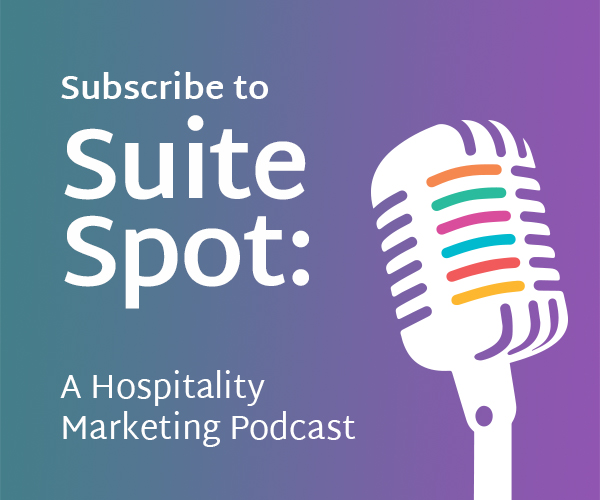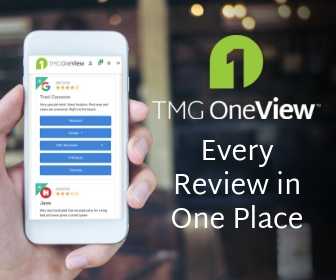51 – COVID Hotel Industry Trends With Jan Freitag

In this special edition of the Suite Spot, we sit down with Senior Vice President of Lodging Insights at STR, Jan Freitag. Jan and his team at STR have been hard at work collecting and analyzing hotel data across the globe during the COVID-19 pandemic.
Jan and Ryan take a look at how the COVID-19 crisis compares to past industry crises and how to look for clues in other global markets to predict what we might see moving forward in the U.S. hotel industry. Jan also shares what recovery signs hoteliers should keep an eye out for to signal the return of leisure transient travel, corporate business travel, and group travel. Jan also discusses what he calls a “high touch to high tech” evolution that will be the new normal in a post-COVID-19 hotel world.
For more information and insights from the STR team, visit their COVID-19 resource center at STR.com. To submit a question for future episodes, call or text 407-984-7455.
Episode Transcript
Our podcast is produced as an audio resource. Transcripts are generated using speech recognition software and human editing and may contain errors. Before republishing quotes, we ask that you reference the audio.
Ryan Embree:
Welcome to the Suite Spot where hoteliers check in and we check out what’s trending in hotel marketing. I’m your host, Ryan Embree. Hello, everyone, welcome to another episode of the Suite Spot: episode number 51. This is your host Ryan Embree coming to you, once again, live from my Orlando, home office. We’ve got an amazing episode for you today. I am super excited for the special guest that we have coming on the Suite Spot with us. He has been a voice that a lot of you have probably been listening to throughout this whole pandemic, COVID-19 situation. And that is Senior Vice President of Lodging Insights at STR, Jan Freitag. So I’m going to have Jan with me on today and we are going to talk data from STR, recovery, and cover all of those good topics. Alright Jan, thank you again so much for joining us. Let’s go ahead and jump right into it.
Jan Freitag:
Yeah, thanks for having me.
Ryan Embree:
You know in your position as Senior Vice President of Lodging Insights at STR your team is really uniquely positioned to identify trends in global hospitality markets. You know, I’m wondering with the data almost changing day by day, how is your team navigating the challenge of COVID-19, which again has really provided a significant disruption to original forecast for this year and beyond?
Jan Freitag:
So it is true the data is changing day by day, by now we can luckily say that the data is getting less bad. So we sort of peaked, if you want to use that word, or troughed out at the bottom the week of April the 11th and ever since then, our week of demand data in the United States has steadily improved bit by bit by bit specifically on the weekends. We’ve seen occupancies actually increasing week over week over week, which is a nice thing to see. We’re navigating this just like everybody else. We’re reporting the data. We ask our clients to trust the data. We are making the best of the data and trying to point out where things are really hurting and where things are getting a little bit better, you know. And STR as a company, it’s nice to see that our Beijing office is actually back in the office, but all the other offices are still working from home globally.
Ryan Embree:
That is awesome to hear and we are constantly looking for any of those signals of good news. So even something as small as people coming back into the office, that is a good signal for our industry. You know, in difficult times like this, we sometimes try to find comparisons from the past to help us understand where we’re going through and, you know, maybe give us that hope moving forward. Now in your webinars Jan, you mentioned prior challenging times 9/11 and the great recession 2008. Now from a data perspective, how does, if at all, does the COVID-19 pandemic compare to past crises we’ve seen in the hotel industry?
Jan Freitag:
It doesn’t, that’s the short answer. So we saw post 9/11 and post 2009 that, you know, RevPAR and ADR declined, you know, over 10%, well over 10%, RevPAR declined, you know, roughly 20% or so. And now RevPAR in April was down over 70% or around 70%, I should say. So we’ve never recorded data like that. The April RevPAR decline for luxury and upper upscale class hotels was over 90%. Group demand basically evaporated completely and there was really no high end transient demand to speak of. So it doesn’t compare. The thing that we look at is now what does a recovery look like? And there, I’m not sure if it compares. We don’t know that yet. What we do know is this ADR recoveries are never V-shaped and we have a sample size of two now, post 9/11 and post 2009, and we saw that it takes us twice as long for ADRs to recover than it is for ADR to hit bottom. So post 2001 from peak to trough, ADR took roughly 12 months and then from trough to peak roughly 24 months. So it takes us twice as long to recover and the same basically true post 2009, took us 17 months to come down and 39 months to go back up. So it’s not unreasonable to assume that this will happen again, this time around, on the ADR front. Now the ADR declines are much, much steeper. We expect ADR this year to decline over 20% for the year, next year, 2021, ADR to increase 1.7%. So basically at the rate of inflation or so. Certainly not a V-shaped recovery. So that’s all we know when you ask us, how do we compare to this? The downturn is unprecedented, the upturn. Well, we have some lessons that we learned last time around, so let’s see if they come to pass.
Ryan Embree:
Yeah, we’ll see and absolutely unbelievable statistics, nothing that we’ve seen before. So it will be very interesting as we continue into the summer months into the fall, into the winter, you know, what that’s gonna look like as far as recovery goes. You know, another place that we look kind of for comfort level, in a sense with this particular crisis that we’re going through, we look at these global markets to kind of get clues as to what we can expect in our market here, what have you seen in the Asian and European hotel markets that could shed some light on what we can expect here?
Jan Freitag:
So basically looking at China as an early indicator of how things might play out in the United States. Now keep in mind that China shut down completely and that the occupancy was basically went into the single digits and that we’re now running roughly about 46% occupancy or so for the week ending May 30th. In the US, we never dropped that low, in the US the occupancy bottomed out around 20% or so. And now we’re back at 37% for the week ending May the 30th. So the question is, will we continue this upward trajectory that we saw in China? Now unfortunately, as of time of this reporting, the headline this morning was that it seemed like that post Memorial day weekend, there was an uptick in COVID-19 cases across states in the United States. Because obviously, as stay at home orders expired and people rushed to the beaches and the mountains and to be outside, it seemed like that not a lot of them followed social distancing rules. So we have to monitor this more closely, but it’s possible that the number of cases picks up. And then the question is, does that impact, you know, occupancy room, demand, and RevPar negatively? Going back to your question, on the China side, China was shut down, then opened up, and now we’re seeing an uptick in occupancy. First, it was leisure drive to demand, which is exactly what we saw in the United States, and we’re now seeing some transient business demand. We have always said, and we said this in March actually, the recovery in the United States will have three segments: leisure, transient, mostly drive to, then corporate transient, and then corporate group. We were right so far that leisure, transient returned on the weekends, we can clearly see that. The FAA tells us that there are more people flying. So the week ending May 30, they checked 2.1 million people in American airports. So that’s good, that’s higher then the number was. Unfortunately, just as a reference point, last year on any given day, they checked 2.2 million people a day. So ending May the 30th, we checked as many people as we checked on a normal day. So my point is, okay, so more people are flying, those are probably smaller companies, independent consultants, gig economy workers who are traveling again. There was some leisure in there as well, but so that’s the part of the recovery, right? Is corporate transient. The last part, the wild card is corporate group. We don’t see that yet. When you look at properties that got hit really hard, and a lot of them closed, you look at luxury and upper upscale. Properties that specifically are targeted at the higher end customers and that arr targeted at the larger customer groups, groups, meetings, conventions, and so forth. We just don’t see that coming back today, or tomorrow. There are smaller groups coming, but the question is, are they allowed to meet? In the ballroom you have a fire marshal sign that says, “Hey, you can have 300 people in here according to the fire marshal.” And from now on next to it is going to be a COVID-19 sign that says, “Hey, according to COVID rules, you can have 120 people in here.” And that will put a damper on people meeting and the size of groups. So far, that is a theoretical conversation because we just don’t see the groups coming back. Now, let me turn back to answer your question about Europe. In Europe, the occupancy completely cratered and were single digits for quite a while. Italy shut down, Spain shut down, UK basically shut down, Germany basically shut down, and you couldn’t stay in a hotel. And so the occupancy are very, very low, and we’re now seeing 15% occupancy up from 9% occupancy for the week ending May 30th. So they still have a long, long, long way to go. The good news is that some of the markets, countries are opening back up. The big question is how will summer, the traditional summer vacation season play out in places like France, like Italy likes Spain who are so, so, so reliant on European travelers to come to their beaches? Or will people just stay in their own country? That’s the big question.
Ryan Embree:
Yeah, absolutely. It will be interesting to see what happens over there. I mean, it’s exactly what you said Jan, you know, when you go into those very, very deep lows like Europe did with the single occupancy, it’s going to take longer to get out of that. So – and this brings me to my next point – you know, you recently wrote an article on Hotel News Now and you shared, “The U S hotel industry sells a million room nights each night no matter what.” Can you explain to our listeners how we know this and what that means to our industry moving forward?
Jan Freitag:
Yeah, that was super fascinating to me from a data perspective. Now, you know, that’s what I do all day. I look at data to try to find sort of, “Oh, these are the interesting, actionable data points.” Unfortunately, this is a data point that we didn’t want to know. We didn’t want to know what does the industry look like when everything is shut down? Now we do. That in the bottom of the COVID-19 downturn, the week of April the 11th, we sold roughly 7 million room nights. Interesting. So who was staying in a hotel when there was nobody traveling, right? And the answer is this was skewed towards the lower end, economy and mid-scale properties had the highest occupancy, well high relatively speaking, at the highest occupancy for economy properties was 30%, you know, but for upper upscale hotels, it was 9%. So very, very stark contrast there and who was staying in those hotels? And it turns out there are always people in life transition, right? Looking to get a new job, getting divorced, or looking to change houses. There are always people in construction jobs, you know, and construction jobs, other than in Boston, sort of continue, so those people stay. They’re always independent consultants, who work in large factories and those people stayed. There are people – and we don’t really talk about them very much because they don’t really move the needle in terms of demand- but we realized that there are people living in hotels week to week to week. They can’t afford a mortgage, they can’t afford to pay rent, so they just pay week to week and an extended stay type property. You know, there are airline crews – you know, I talked to a friend who works for one of the big three who was like look Jan, “We parked 500 planes across the country, they have to be moved.” So every morning the crew actually goes to work, fires up the engine, and drives the plane 10 feet – to rotate the tire and lubricate the piston, and then they go home, I assume to play video games of flight controller. So it’s just interesting, right? Like the industry came to a standstill and there are still people staying in our hotel for a variety of reasons that, as I said, normally don’t move the needle, but they sort of came to the forefront. The other interesting sort of subchapter on this is, people who actually rented a room not to stay there, but to work in it. So there were a bunch of articles written, one in Hotels New Now, one in the New York Post about general managers who just attracted a target audience of people living in two to four miles away from the hotel, who said, “I can’t get anything done at home. My kids are driving me crazy. You know, what do I do?” Well, these are perfect offices, right? We have high speed bandwidth, you have your own bathroom, and they just don’t sleep there. They just go there everyday and rooms are cheap right now, to stay in an office because obviously we work and the other offices were all closed. So just lots and lots of different pieces of demand that normally we don’t focus on.
Ryan Embree:
Yeah, absolutely. That was, you know, one of the tips and best practices we gave our hotel listeners during this time was to try to get creative in those solutions, offering up your hotel room as an office space, you know, and once they’re at the property, if you host them properly, that might extend their comfort level a little bit more. Seeing that they’re coming in and out of a hotel every single day, they’re seeing the cleanliness procedures that are going on, the kind of “new normal” that we’ve been talking about, you know, that could have an impact on occupancy moving forward with those travelers that are willing to go to a hotel for an unconventional way office space, so to speak.
Jan Freitag:
Oh, that’s a good point. I hadn’t thought about that. Just sort of training your next customer, you know, about how clean they are. I hadn’t thought about that. Yeah, that rings true.
Ryan Embree:
Exactly. One of the things that I love – I believe you call it on your webinars: The eyeball chart. Where you’re talking about tracking trends by regions. I’m curious, how does geographic region play in the role of speed of recovery?
Jan Freitag:
Yeah, so we had something called: the eyeballs of recovery. I’m not sure that that’s the best name of it, but what we basically are able to do is we plot every single sub-market in a specific color. And whereas you can see so clearly that through March and then April, the data got very bad and the red dots in that circle increased, and now we’re seeing the red dots in that circle decreasing, and the green dots – meaning the higher occupancy- sub-markets are increasing. What do we absolutely clearly see is an uptick in demand and occupancy in markets that have something to offer that’s outside. Florida, Texas, Utah, the great Smokey Mountains, Gatlinburg, Tennessee. So what we saw very, very clearly here that for the last couple of weeks, that the occupancies in those drive to markets have increased.
Ryan Embree:
Yeah, you’re absolutely right. Our corporate offices at Travel Media Group are based here in Orlando. We are definitely going to see an increase in that transient traveler that you were talking about coming in. We have, I believe SeaWorld opening today, Universal already opened, and Disney coming in July. So I’m sure we’ll see an uptick of those transient travelers coming, and you know, that’s going to be huge for the Orlando region. But again, for hoteliers out there and listeners out there identify where are there some outdoor spaces like Jan was talking about that travelers can take advantage of and make sure, you know, your marketing those on your social media and your websites, because that’s where these first travelers are going to feel most comfortable as they start to return to travel. Jan, I want to get back to something you were talking about: group travel. You talked about with your leisure guests, you know, drivable distances. You talked about the corporate coming back and we can kind of identify that through TSA screenings. I’m wondering what signals are we going to see out there when it comes to group travel returning, what should we be on the lookout, maybe as an indicator that group travel might be on its way back?
Jan Freitag:
I’m supposed to be the expert and I’m supposed to have all the answers, but this is the question where I really have to say, I don’t know yet. I can see leisure, I can sort of wrap my head around it, what that looks like drive to and we see that in the data. I can get a sense of corporate, individual travelers going back on the road and being socially distant, I can sort of wrap my head around that. I am not yet sure what meetings look like in a six foot world. I know that a lot of entities have put out, “Hey, here’s how we’re going to meet and here’s how we’re going to do it. It’s going to be, you know, you can only walk one way in the ballroom. There’s not going to be buffets anymore. There is going to grab and go food and there’s not going to be – mostly classroom style seating – and if you have a 10 top, maybe only four people sit at a round table.” Like all of those are things that I read about, I don’t think anybody’s has yet really done it. So I think what we will need is groups to meet, in order to see how groups meet, because there will be starts and stops and things that we’re like, “Oh, well that actually doesn’t work that way. Oh, maybe this is the way it works best.” So it’s hard for me to answer this specific question. The indicator I’m looking for is just for groups to actually go out and try it and not be virtual, but actually be in the same ballroom in the same city. And then to see how does this work and what have we learned from it. And keep in mind that, of course, these meetings are falling under regulations that vary widely by state and by city. You know, here in Nashville, the mayor has a point of view on this versus the governor who has a point of view on this, whereas the general manager has a point of view and whereas our meeting planner, who has a point of view on that. So all of these things have to sort of align. That’s a very long answer to say, I really don’t know.
Ryan Embree:
Well, it’ll be definitely be interesting to see kind of what creativity and ingenuity comes out of this, because again, as we mentioned before, with the office space, hoteliers are looking for every opportunity to get creative, to put some ideas out there that we’ve never seen before. So it’ll be interesting to see. Are there any other COVID-19 processes, you talked about maybe taking away the buffet, maybe limiting capacity, but do you see any other parts of the hotel experience become part of the “new normal” as travelers start to arrive there?
Jan Freitag:
Yeah, absolutely. It’s going to go from high touch to high tech. I think we already saw that over the last couple of years, you know, keyless check in, that you use your phone basically for everything. That is absolutely put into hyperdrive and owners and brands are moving in that direction at lightspeed. So you minimize the interaction that you have with the staff and everything is going to happen on your phone either through text or through FaceTime or the phone as your key and as your access card to everything. That is the future. That is the next normal, you know, and there’s going to be a lot of technological solution. Now the question is, on the very high end of the market where high touch was always something that you paid for, you know, what does that look like? What does a luxury experience look like post COVID? Where, as I said, everything happens on your phone and you really don’t want to interact with this very well trained staff. What does that look like and how do those hotels differentiate themselves? It will never be fully tech, obviously, maybe on the lower price points, but in the higher price points I’m very curious to see how the interactions with the guests take place. So that’s one thing I would look at. The other thing is that I think, unfortunately we’re going to have more trash. I think we’re going to go back to everything being wrapped. And that is really sad, like I think we made a lot of progress over the last couple of years, you know, in reducing our footprint, our trash footprint, our carbon footprint. And unfortunately, I think the sort of the pendulum is gonna swing the other way. You know, that everything is going to be single wrapped again, I hope not. I hope that we are using foresight and looking forward and saying, “Ah, we can’t really sustain that. We don’t want to undo all the gains that we made.” But I think on day one, guests are going to be most comfortable saying, “Oh, I’m the only one who’s use this.”
Ryan Embree:
Yeah, absolutely. High touch to high tech, absolutely love that phrase. I completely 100% agree with you. And it’s out of necessity, you know, we’ve talked about it on this podcast before, tech in hotel industry, for some reason, compared to other industries, it’s just a little bit slower, right? We still have that landline phone in the hotel room. We still, when we order that breakfast might need to put out our order on the doorknob. This pandemic is, for better or worse, going to really speed up that learning curve. And what you said about green initiative prior to the pandemic, all of these large franchise companies coming out and putting a hard stance on, you know, plastic straws and you’re absolutely right Jan, I hope that doesn’t get lost in all of this, but it is something that as travelers, as consumers, we’re either going to have to be able to deal with on one side of it or the other. So very interesting. A lot of this is very unknown.
Jan Freitag:
Yeah, the other part I should probably mention is housekeeping. It sounds like that the traditional way of we think about housekeeping is gone, but there will be a very deep cleaning after the guest leaves and then maybe the room will be left unoccupied for 24 hours or so. I’ve heard actually of some hotels where the guest checks out the room is not touched by anybody for 24 hours, then deep cleaned, and then again, not touched for 24 hours and then rented again. You can obviously only do that when you have very low demand in that we have right now, it’s going to be interesting to see how we handle that as the number of rooms sold increases, but there will not be the traditional, “Oh, you stay for three nights, you get A) turn down service B) just regular refreshment every day of your room. That is gone, you know, because people don’t want to interact. So the good news is that we’re going to use less chemicals and cleaning materials in those cleaning services that we used to do every day, but it’s going to be sort of a hardcore cleaning when the guest checks out. I think that is definitely a change that is welcomed by the guests, but it is absolutely positively welcomed by the owners because there’s going to be a cost savings that, you know, we won’t use the word cost saving. We’re going to say, “No, we’re going to keep you safe. We’re going to not interact with you.” But I think there’s definitely going to be – the owners are gonna love that.
Ryan Embree:
Yeah, hoteliers are on track with some of those implementations of the 24 hour – and I’ve read up on that as well – 24 to 48 hours between stay. Hoteliers are going to have some difficult decisions when it comes to their supply and an occupancy here. So it will be interesting to see how they handle that. On the Suite Spot podcast, we try to, you know, in some of these educational talks about COVID-19 and what we’re going through with some good news. So we’re constantly looking for any sort of signal of good news. You have any for us today? Can you share any recent data that might increase optimism for hoteliers movement forward?
Jan Freitag:
Yeah, so last weekend, the week ending May the 30th, there were actually two sub markets that saw positive year over year growth in occupancy and room rate. All you have to do to do that, is you have to shoot a rocket into space. And when you do that, you have no problem attracting people. So the SpaceX launch, drove occupancies on the space coast up higher year over year. So I don’t know how applicable that is, but if you have, you know, a direct line to Elon Musk and say, “Hey, you know, do you mind shooting up a rocket from our sub market?” You will absolutely see the positive impact.
Ryan Embree:
Yeah, we are going to need some more rockets or solar eclipses or some sort of, you know, phenomenon, but you know, that is positive to see. And again, that’s what we’re looking for. You know, obviously we’ve got that streak going of increase in occupancy going right now. Hopefully that will continue as we get into the summer months, as you kind of posed the question, will be interesting to see as we get into these summer months, which is typically busiest time of year for hoteliers, how these travelers going to be reacting. So absolutely love the insights, Jan. We always like to open it up for just any final thoughts that you might have about the episode or kind of where we are today?
Jan Freitag:
I mean our main takeaway is always: trust the data. Number 2, we have a whole host of resources on STR.com. There’s a COVID-19 landing page, I record a weekly video about the United States, our friend Tony Manuel records a weekly video episode about the UK, and then there are biweekly webinars for the greater Europe area, and we also have a weekly video – eight minutes long – for the greater APEC region. All of those are available there for free, check them out. And especially on the China side, look at them and then sort of get your bearings on what the recovery looks like. China’s roughly six to seven weeks ahead of the United States, the way it looks like right now. So trust the data and use as a resource and thanks so much for having me.
Ryan Embree:
Absolutely Jan you’re invited anytime you’d like. Just wanna again, thank you and your team for all the insights. I know for me personally, and our team at Travel Media Group, the insights and amazing work that you guys do at STR, have got us going through, getting us excited about this recovery, which hopefully we are in the early stages of that. But I appreciate your time today and thank you so much.
Jan Freitag:
Thank you. Have a great day.
Ryan Embree:
That was my exclusive interview with Senior Vice President of Lodging Insights at STR Jan Freitag. If you are looking for more information, as Jan said, you can always visit their website. They’ve got a great COVID resource center at STR.com. If you have any questions about any of the content that we talked about, are interested in being a special guest, or just have a topic that you’d like to hear from us at the Suite Spot talk about, please feel free to reach out to us (407) 984-7455. This again, is Ryan Embree your host of the Suite Spot and thanks for listening. We’ll talk to you next time. To join our loyalty program, be sure to subscribe and give us a five star rating on iTunes. Suite Spot is produced by Travel Media Group, our editor is Anne Sandoval with cover art by Bary Gordon. I’m your host, Ryan Embree and we hope you enjoyed your stay.





0 Comments